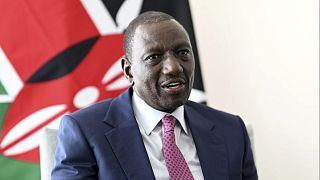USA
A new UNICEF report released Friday highlights the impacts of climate change on children, saying that 20,000 children were displaced every day between 2016 and 2021.
A total of about 43 million children, on average, were displaced during the six-year period due to the impacts of storms, floods, fires and other extreme weather made worse by climate change.
The report published by the United Nation's children's agency also warns that even the most moderate estimates that only take into risks from flooding rivers, cyclonic winds and floods amount to an expected 113 million displacements of children over the next 30 years.
Extreme weather
Children had to leave their homes at least 1.3 million times because of drought in the years covered by the report, more than of them in Somalia, although the report says this is likely an undercount. Unlike floods or storms, people do not evacuate before a drought hits.
Floods and storms accounted for 40.9 million - or 95 per cent - of the children displaced.
On average, children living in the Horn of Africa or on a small island in the Caribbean are more vulnerable to the impacts. Many are enduring the overlapping crises of conflict, fragile institutions and poverty.
Increased risks
Displacement increases other risks to children.
Children can easily become separated from their parents or caregivers when fleeing their homes, making them at far greater risk of being exploited, trafficked or abused.
Displacement also disrupts access to education and healthcare. For girls, the threats are even greater, with adolescent girls at heightened risk of early pregnancy and violence.
“It is terrifying for any child when a ferocious wildfire, storm or flood barrels into their community,” said UNICEF Executive Director Catherine Russell. “For those who are forced to flee, the fear and impact can be especially devastating, with worry of whether they will return home, resume school, or be forced to move again. Moving may have saved their lives, but it’s also very disruptive.
Future risks
Yet until now, children displaced by weather-related events have been statistically invisible. Existing displacement data are rarely disaggregated by age, and factors such as rapid urbanization, fragility and conflict can mean that children on the move are even more likely to slip through the cracks.
Until now, the link between children's displacement and weather-related events was not visible in the data. UNICEF worked with the International Displacement Monitoring Center, a Geneva-based nonprofit, to map where children were most impacted.
The children's agency says policymakers and the private sector now need to ensure that climate and energy planning takes into account risks to children from extreme weather.
The report says vital services like education and health care need to become "shock-responsive, portable and inclusive" to help children and their families better cope with disasters.












Go to video
ICC warns of a dire humanitarian crisis in Sudan as the war rages on
01:55
Burkina Faso's only eye doctor for children sees trauma of both play and conflict
02:06
UN report reveals 4.6 million people struggling with food insecurity
01:22
World will have to learn to live with heatwaves, UN says
01:12
One child displaced every five seconds in MENA region conflicts
01:39
Sustainable development financing conference opens in Seville